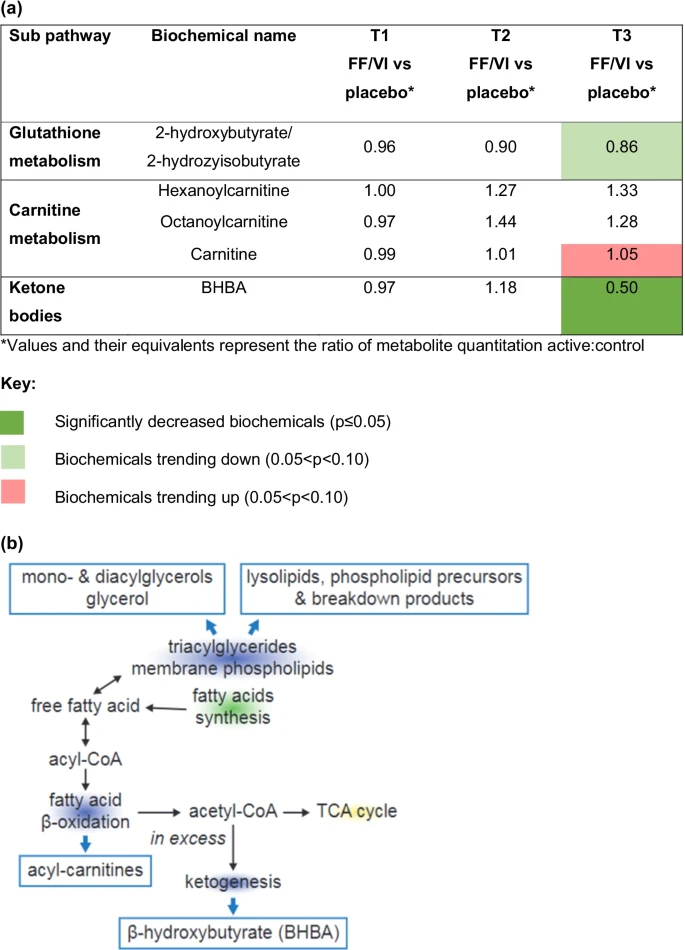Background
Fluticasone furoate/vilanterol trifenatate (FF/VI) is an inhaled therapy for the treatment of asthma, with a prolonged duration of anti-inflammatory and bronchodilatory action. This study investigated the global metabolomic and lipidomic profile following treatment with FF/VI or placebo and assessed whether changes correlated with exhaled nitric oxide levels as a measure of airway inflammation.
Methods
This was a single-center, randomized, double-blind, placebo-controlled, two-period, crossover, repeat-dose study. Adults with asthma (forced expiratory volume in 1 s ≥ 60% predicted; fraction of exhaled nitric oxide [FeNO] > 40 parts per billion) received once-daily FF/VI 100 µg/25 µg or placebo for 14 days, followed by a 21-day washout period. Serum samples were taken at pre-dose (T1), and 15 and 21 days (T2 and T3, respectively) post dose in each period. The metabolomic and lipidomic profiles were analyzed by liquid chromatography with tandem mass spectrometry and polar liquid chromatography platforms, and ions were matched to a library of standards for metabolite identification and quantification. FeNO values at each timepoint were evaluated for correlations with the biochemical data.
Results
Of 27 randomized participants (mean age 24.5 years, 63% male), 26 provided serum samples for metabolomic analysis. A total of 1969 metabolites were identified, 1634 of which corresponded to a named structure in a reference library. Treatment-related changes in the metabolome were generally subtle, with a modest increase in metabolite perturbations across timepoints. The percentage of metabolites with significant changes (p < 0.05 for all) (increases↑/decreases↓) versus placebo were: 2.1% (1.1%↑/1.0%↓), 6.7% (0.46%↑/6.2%↓) and 11.8% (0.86%↑/10.9%↓) at T1, T2 and T3, respectively. Treatment with FF/VI reduced FeNO levels by 60%, whereas the systemic intermediates involved in NO biosynthesis remained unaffected. Evidence of systemic anti-inflammatory activity was seen in complex lipid pathways, suggesting reduced phospholipase-A2 activity, but without downstream impact on free fatty acids or inflammatory mediators. Consistent with the pathogenesis of asthma, there was evidence of higher fatty acid β-oxidation and lower glycolysis in the placebo arm; this pattern was reversed in the treatment arm.Conclusions
Despite the prolonged airway anti-inflammatory action of FF/VI, this was accompanied by only subtle systemic metabolomic and lipidomic changes.


No comments:
Post a Comment